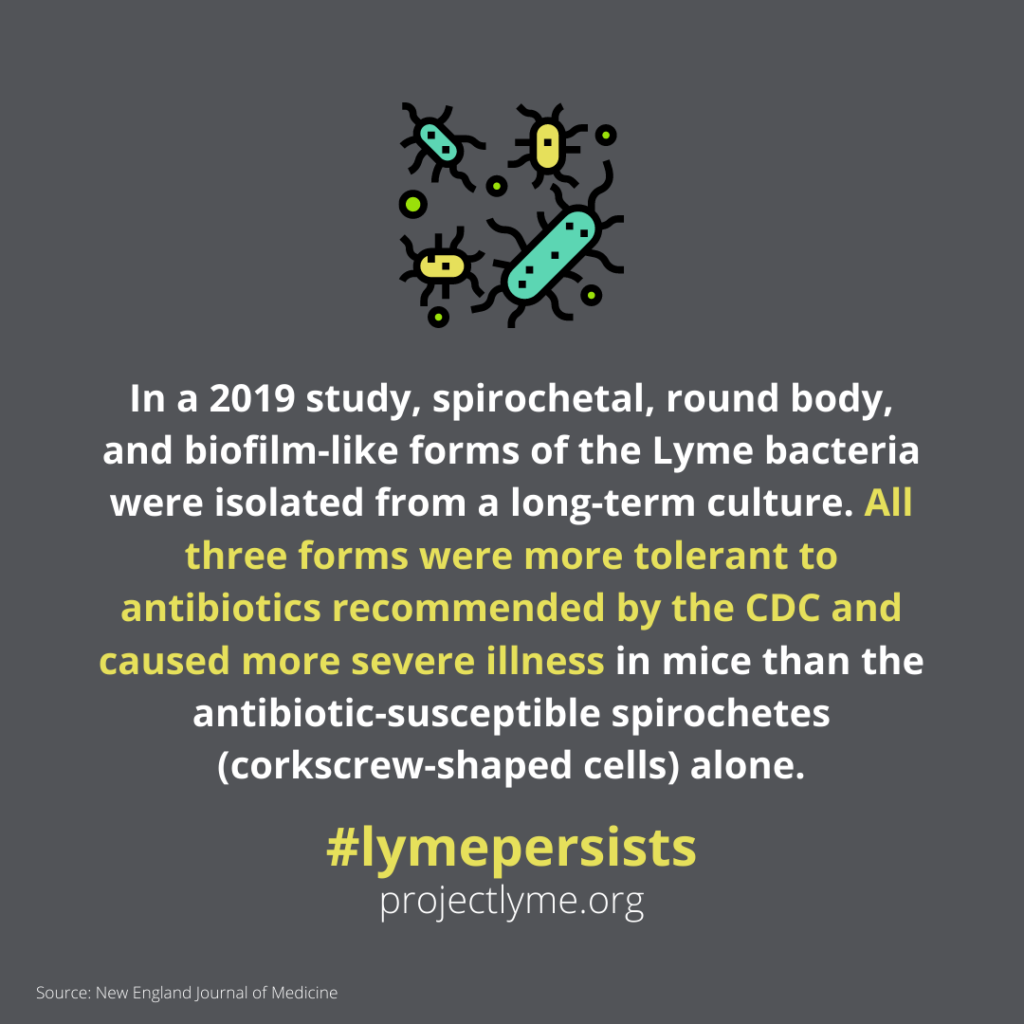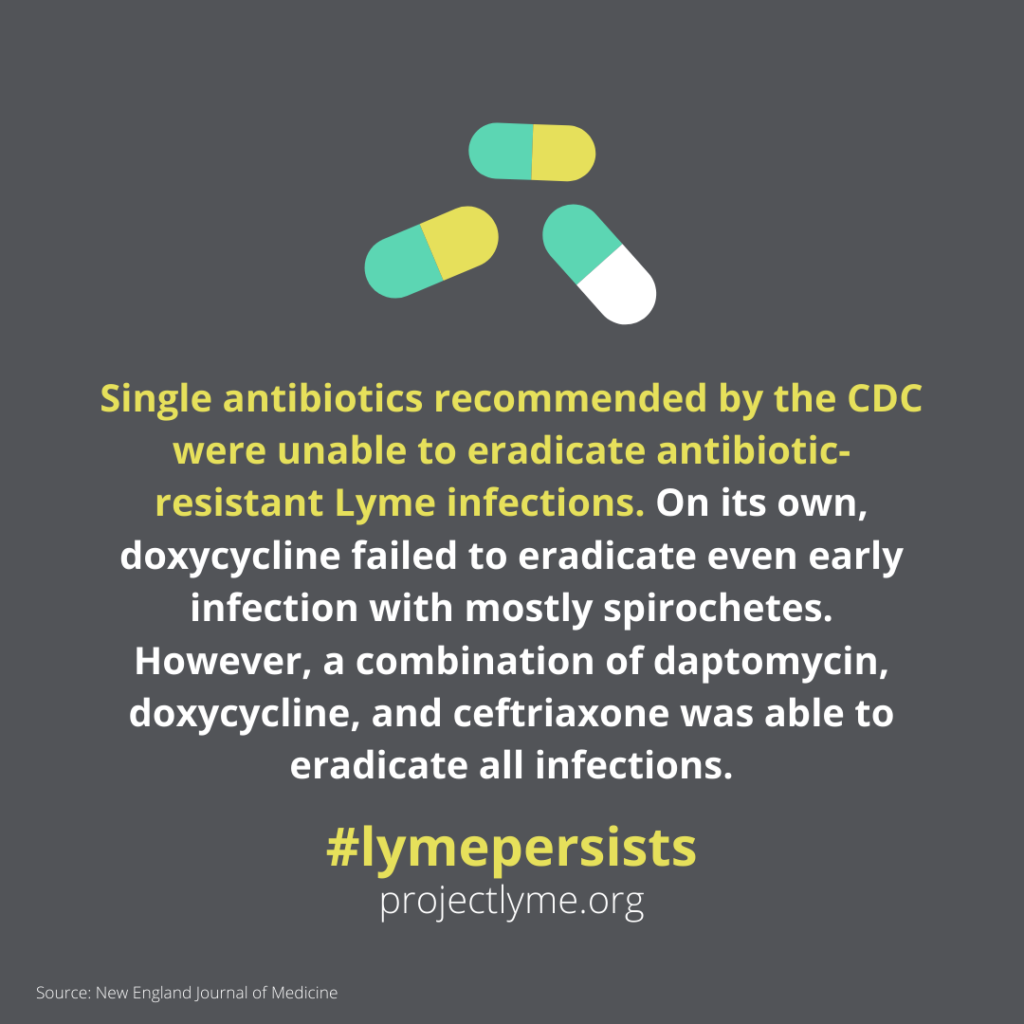CDC RECOMMENDED ANTIBIOTICS
FAILED TO CLEAR LYME IN MICE



In a 2019 study, spirochetal, round body, and biofilm-like forms of Borrelia burgdorferi, the causative agent of Lyme Disease, were isolated from a ten day old stationary phase culture (phase when population growth stabilizes, like in a disseminated infection). All three of these forms were found to be much more tolerant to currently recommended antibiotics than bacteria in the log phase (period of exponential growth, like in an acute infection).
Mice were infected with each type of stationary phase cell culture, and a log phase culture. The stationary forms caused more severe arthritis and myocarditis (inflammation of the heart) than the log form, with the stationary biofilm-like form causing the most severe illness.
30 days of doxycycline, an antibiotic recommended for Lyme, was unable to eradicate both the log phase and stationary infections, however 30 days of ceftriaxone—another recommended antibiotic—was able to eradicate the bacteria in mice infected with the log phase, but not the stationary.
A combination of daptomycin, doxycline, and ceftriaxone, proven in a previous study by the authors to be effective together against stationary phase persisters in vitro, was able to fully eradicate the stationary phase infections in the mice.
The authors of the study proposed two types of persistent Lyme Disease:
- “early development of persistent disease from inoculation with persister/biofilm at the beginning of infection introduced by tick bites.” This means a tick transmitted antibiotic resistant forms of the bacteria to the host.
- “Late development of persistent disease due to initial infection not being diagnosed or treated in time such that the infection develops into late persistent disease.” This means that the infection wasn’t treated in time and shifts from the log phase to the stationary phase, shown in studies to be heavily antibiotic resistant.
Key takeaway: a combination of therapies addressing all forms of B. burgdorferi is needed to ensure the best treatment outcome.